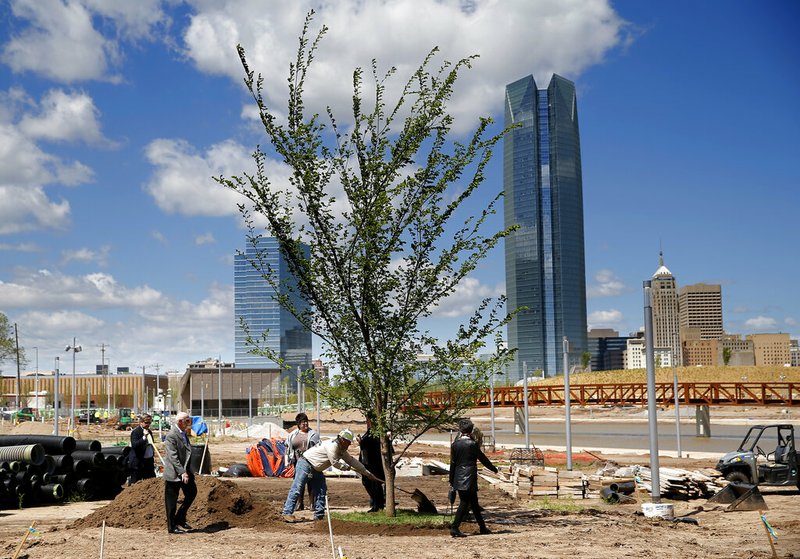OKLAHOMA CITY -- Science and technology are helping Oklahoma City to sustain the DNA -- and the spirit -- of a tree that has symbolized hope in the 24 years since the deadliest act of domestic terrorism in U.S. history shook the city to its core.
As part of an annual remembrance of the bombing, civic leaders and state officials on Friday transplanted a tree that was cloned from a scarred American elm that withstood the blast that leveled half of the Alfred P. Murrah Federal Building on April 19, 1995.
The "Survivor Tree" features prominently at the Oklahoma City National Memorial, overlooking 168 chairs that represent those killed. The intent of the DNA work is that the younger elm will replace the nearly 100-year-old "Survivor Tree" after it eventually dies.
"While we hope that tree lives forever; trees are like us," said Kari Watkins, executive director of the memorial, which uses a rendering of the tree's canopy in its logo.
The surviving tree's eventual replacement was cloned by taking the rootstock of a young tree that sprouted from a "Survivor Tree" seed. Nursery workers then grafted a cutting of the original tree onto the newer plant's roots. The new tree was moved from a local yard to a specially designed area in a future park about a mile south of the original tree.
Machinery can move a tree with a mass of roots measuring 25 feet and haul it away to be replanted, said Mark Bays, a state forester. No one is sure when that might need to happen at the bombing memorial, but technology is only expected to get better.
"All living things come and pass. We hope it's an extended period of time before that happens to this one," Bays said, adding that American elms can live up to 150 years in forests. "But that's, I think, one of the significant things of this. We can now protect and observe the genetics of this actual tree, and its genetics will outlive everybody."

Bays was part of a team that helped build a stone, elevated viewing area around the "Survivor Tree," whose leaves reach to the third-story windows of an interactive museum above the memorial. The viewing platform is on piers to allow the surrounding soil to breath. The stones can easily be removed when the new tree needs to be replanted there.
For now, the cherished tree looks healthy -- though still battered -- on the highest point of the memorial.
The elm's bark is almost white in spots, with other deep brown streaks. Knots mark where broken branches were sawed and then sanded smooth.
Some of those pieces have been given to the memorial's biggest supporters, including Bill Clinton, who was president when a truck parked near the building and packed with explosives detonated on a Wednesday morning, just as the workday was starting for adults, and children were settling into a daycare.
Like many trees that grow in central Oklahoma, where the edge of the eastern forest meets the prairie, this one doesn't grow straight. It leans with Oklahoma's famed wind.

Imagery of the "Survivor Tree" is so powerful that many want their own piece: For more than 20 years, the memorial has given away saplings that germinated from its seeds. While not genetic replicas, they are considered "children" of the resilient tree.
That was enough Friday for more than 80 people who stood in line for their own young tree, after the names of all those killed in the bombing were read aloud.
Sheridean McMahan, of Jones, a town about 20 miles northeast of Oklahoma City, was first in line with her adult son, grandson and great-grandson. The 76-year-old got a tree for her nephew, a sheriff's deputy who now lives in Maine.
The self-described "Okie" said she has a "Survivor Tree" offspring planted in her own yard that broke and nearly died over the winter.
"It's coming back, and it's something to pass down to someone else," McMahan said. "I guess it's a survivor, too."
Follow Adam Kealoha Causey at www.twitter.com/akcausey .
NW News on 04/21/2019

